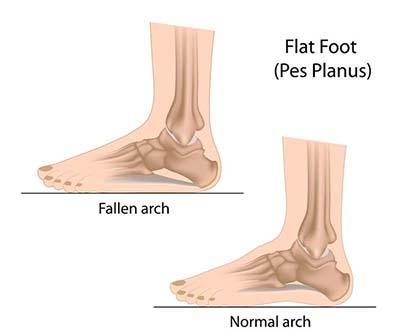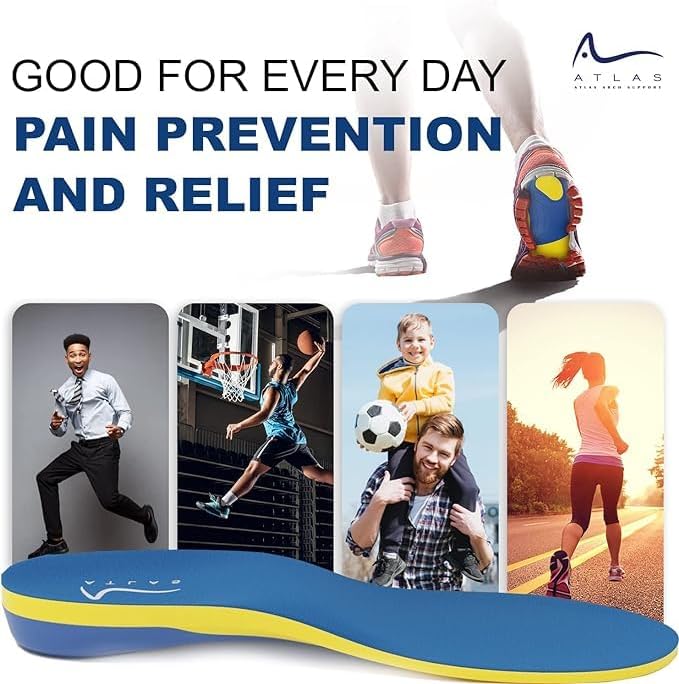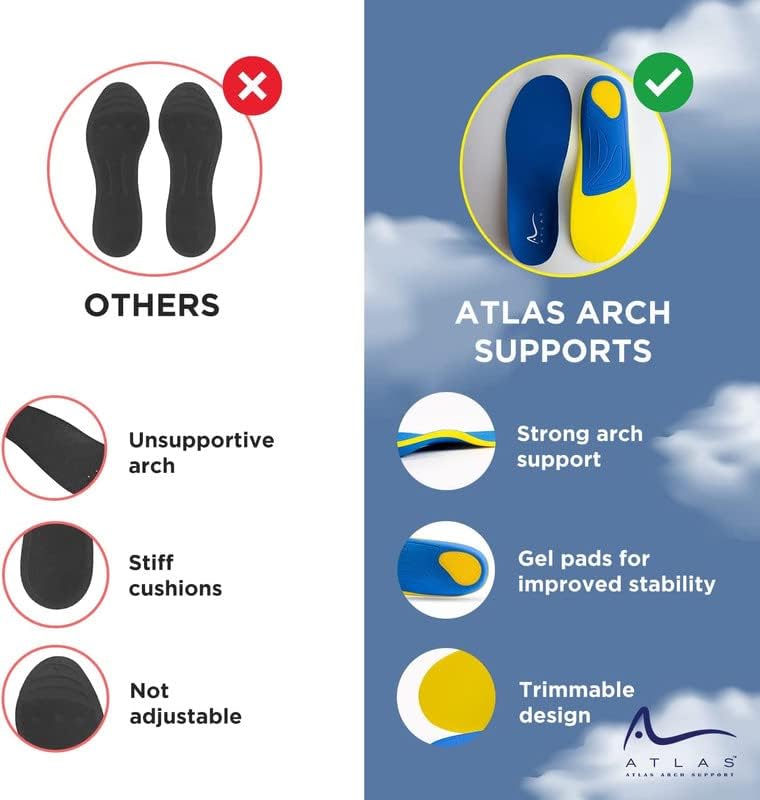Unlock the secrets to managing flat feet with our comprehensive guide. Discover the causes, symptoms, and effective treatments to enhance your foot health and improve daily life. Dive into a world of comfort and stability today.

Introduction
Navigating the complexities of flat feet begins with understanding its foundation. This condition, marked by the loss of the foot’s natural arch, can arise from birth or develop through life’s wear and tear. It presents a unique set of challenges, affecting everything from daily comfort to the choice of footwear. Our exploration dives into the heart of flat feet, unraveling its causes, types, and the ripple effects on physical well-being. Through this comprehensive guide, we aim to arm you with knowledge and strategies to enhance foot health, ensuring a step towards alleviating discomfort and embracing a more active lifestyle.
Table of Contents
Understanding Flat Feet

Flat feet, also known as fallen arches, occur when the arches of the feet flatten out, allowing the entire sole of the foot to touch the ground when standing. This condition can be present from birth or develop over time due to various factors. Here’s an overview of the causes, symptoms, and how flat feet can impact daily life:
What are the main causes of flat feet?
Flat feet can be caused by several factors, including:
| Genetics: If flat feet run in your family, you might be more prone to developing them. |
| Injury: Injuries to the foot or ankle can result in flat feet. |
| Age: As you age, the tendons in your foot may weaken, increasing the risk of flat feet. |
| Pregnancy: Hormonal changes during pregnancy can lead to temporary or even permanent changes in the structure of your feet. |
| Obesity: Carrying excessive weight can exert additional pressure on your foot arches. |
| Medical Conditions: Certain conditions, such as diabetes and rheumatoid arthritis, can impact the structure and functionality of your feet. |
What specific symptoms should individuals search for to identify flat feet?
Identifying flat feet early can help manage symptoms more effectively. Be on the lookout for:
| Pain: You might experience discomfort in your feet, ankles, or lower legs, especially after prolonged periods of standing or walking. |
| Muscle Fatigue: A lack of arch support can lead to quickly tired feet. |
| Arch Strain: You may feel a strain or discomfort in the area of your arch. |
| Overpronation: An inward rolling of the feet while walking could indicate flat feet, potentially leading to alignment issues in your legs. |
How do flat feet affect your daily life and overall well-being?

Living with flat feet can significantly affect your daily activities and overall well-being:
Physical Activity Limitations: You may find it challenging to engage in certain sports or activities due to pain or discomfort.
Footwear Challenges: Searching for comfortable and supportive shoes might become more difficult.
Increased Risk of Injuries: The altered alignment of the feet can lead to a higher risk of ankle sprains, plantar fasciitis, and other foot-related injuries.
Chronic Pain: Without proper management, flat feet may lead to ongoing pain in your feet, ankles, knees, hips, and even lower back, as a result of leg misalignment.
What specific practical management tips (Non-Surgical Treatment) should individuals with flat feet follow?

If you’re navigating life with flat feet, adopting a comprehensive management strategy can significantly enhance your comfort and mobility. Here’s a user-friendly guide to non-surgical treatments and practical tips to help you effectively manage your condition.
Daily Management and Relief
Stretching Exercises: Incorporate regular stretching to ease tension in your feet and calves. Focus on exercises that target the Achilles tendon and the plantar fascia for optimal relief.
Strengthening Exercises: Improve foot stability by strengthening the muscles around your arches. Simple exercises, such as toe curls and heel raises, can make a big difference.
Rest and Elevation: Give your feet a break after prolonged periods of standing or walking. Elevating your feet can help reduce swelling and discomfort.
Physical Therapy: Engage with a physical therapist to develop a tailored exercise program. This can include strengthening the foot and ankle muscles, improving balance, and supporting the structural integrity of your feet. Treatments may also involve ultrasound therapy, electrical stimulation, and manual therapy to mitigate pain and inflammation.
Medications: Consider using nonsteroidal anti-inflammatory drugs (NSAIDs) to manage pain and inflammation associated with flat feet.
Footwear Choices
Supportive Shoes: Choose shoes with adequate arch support and a cushioned sole. Avoid flat shoes and worn-out sneakers that don’t provide the necessary support.
Orthotic Inserts: Both custom-made and over-the-counter orthotic inserts can offer significant relief by supporting the arches and evenly distributing foot pressure. They can also aid in correcting foot alignment.
Proper Fit: Ensure your shoes fit correctly. Ill-fitting shoes can aggravate foot pain and lead to additional foot issues.

Long-term Care and Considerations
Weight Management: If you’re carrying extra weight, reducing it can lessen the stress on your arches and mitigate symptoms.
Regular Check-ups: Schedule regular appointments with a podiatrist to monitor your condition and adjust your management plan as needed.
Avoid Aggravating Activities: Identify and modify activities that exacerbate your symptoms, opting for gentler alternatives.
Use of Assistive Devices: In severe cases, your healthcare provider may recommend supportive devices like custom orthotics, ankle braces, or specially designed footwear.
Lifestyle Adjustments
Modify Physical Activities: Opt for low-impact exercises such as swimming or cycling, which are easier on your feet than high-impact activities.
Practice Good Posture: Maintaining proper body alignment can help reduce strain on your feet, ankles, knees, and hips.
Stay Active Within Comfort: It’s crucial to stay active, but equally important to listen to your body. Avoid pushing through pain to prevent further injury.
Seeking Professional Advice
If you’re experiencing persistent pain or discomfort due to flat feet, it’s crucial to seek advice from a healthcare professional. They can provide a tailored management plan, which may include physical therapy, specific exercises, or in some cases, surgical options for severe or unresponsive cases.
Living with flat feet doesn’t have to limit your quality of life. By following these practical management tips, you can alleviate discomfort, improve foot health, and continue to enjoy an active lifestyle. Remember, individual needs vary, so it’s important to consult with healthcare professionals to tailor these suggestions to your specific situation.
What are the available surgical treatments for Flat Feet?
Surgical intervention may be considered if non-surgical treatments have been ineffective, especially if the condition is causing severe pain or hindering daily activities. The type of surgery depends on the severity of the flat feet, the underlying cause, and the individual’s specific circumstances.
1. Tendon Repair
If flat feet are caused by a damaged or torn tendon, surgery may be necessary to repair the tendon and restore normal foot function.

2. Osteotomy
This procedure involves cutting and repositioning bones in the foot to correct the alignment and rebuild the arch.

3. Arthrodesis
Also known as fusion surgery, arthrodesis involves fusing one or more bones in the foot or ankle to correct deformities and stabilize the foot.

4. Lateral Column Lengthening
This surgery involves lengthening the lateral column of the foot to correct the arch and redistribute weight more evenly.

5. Implant Insertion
In some cases, surgeons may insert implants into the foot to support the arch and prevent the foot from rolling inward.

Making the Decision
The decision to pursue surgical treatment should be made in consultation with a healthcare provider, typically a podiatrist or orthopedic surgeon. Factors to consider include the severity of symptoms, the impact on quality of life, and the potential risks and benefits of surgery.
FAQ Section
Q1: What causes flat feet?
A1: Flat feet can result from genetics, injury, age-related tendon weakening, pregnancy, obesity, and certain medical conditions like diabetes and rheumatoid arthritis.
Q2: How can I identify flat feet?
A2: Look for symptoms like foot pain, muscle fatigue, arch strain, overpronation, and difficulty finding comfortable shoes.
Q3: How do flat feet impact daily activities?
A3: They can limit physical activity, make finding suitable footwear challenging, increase injury risk, and lead to chronic pain.
Q4: What are effective management strategies for flat feet?
A4: Utilize stretching and strengthening exercises, rest and elevation, supportive shoes, orthotic inserts, weight management, and avoid activities that strain your feet.
Q5: Are there surgical options for flat feet?
A5: Yes, surgeries like tendon repair, osteotomy, arthrodesis, lateral column lengthening, and implant insertion are considered when non-surgical treatments don’t relieve severe symptoms.
Q6: How can orthotics help with flat feet?
A6: Both OTC and custom orthotics provide support, relieve pain, enhance stability, and improve alignment, aiding in comfortable and active living.
Conclusion
Effectively managing flat feet requires a blend of daily care, appropriate footwear, and targeted exercises. By understanding the underlying causes and adopting a comprehensive treatment strategy, including the use of orthotic solutions, individuals can significantly alleviate discomfort and enhance their quality of life. Whether through non-surgical approaches or considering surgical options for more severe cases, taking proactive steps towards foot health can lead to improved mobility and well-being. Remember, consulting with healthcare professionals is crucial to tailoring a management plan that suits your specific needs and lifestyle.










